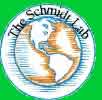







Web Links
Symbiotic N2-fixation in alpine tundra: ecosystem input and variation in fixation rates among communities
William D. Bowman, James C. Schardt,
and Steven K. Schmidt
Oecologia (1996) 108: 345-350
 |
|||||||||||
 |
 |
 |
 |
 |
 |
 |
|||||
|
Web Links |
Symbiotic N2-fixation in alpine tundra: ecosystem input and variation in fixation rates among communities
|
||||||||||
|
William D. Bowman, James C. Schardt,
and Steven K. Schmidt
|
|||||||||||
|
|
|||||||||||
| Annual inputs of symbiotic N2-fixation associated with 3 species of alpine Trifolium were estimated in four alpine communities differing in resource supplies. We hypothesized that fixation rates would vary according to the degree of N, P, and water limitation of production, with the higher rates of fixation in N limited communities (dry meadow, moist meadow) and lower rates in P and water limited communities (wet meadow, fellfield). To estimate N2-fixation rates, natural abundance of N isotopes (15N) were measured in field collected Trifolium and reference plants and in Trifolium plants grown in N-free medium in a growth chamber. All three Trifolium species relied on a large proportion of atmospherically-fixed N2 to meet their N requirements, ranging from 70 to 100%. There were no apparent differences in the proportion of plant N derived from fixation among the communities, but differences in the contribution of the Trifolium species to community cover resulted in a wide range of annual N inputs from fixation, from 127 mg m-2 year-1 in wet meadows to 810 mg m-2 year-1 in fellfields. Annual spatially integrated input of symbiotic N2-fixation to Niwot Ridge, Colorado was estimated at 490 mg m-2 year-1 (5 kg ha-1 year-1), which is relatively high in the context of estimates of net N mineralization and N deposition. | |||||||||||
Oecologia (1996) 108: 345-350
|
|||||||||||